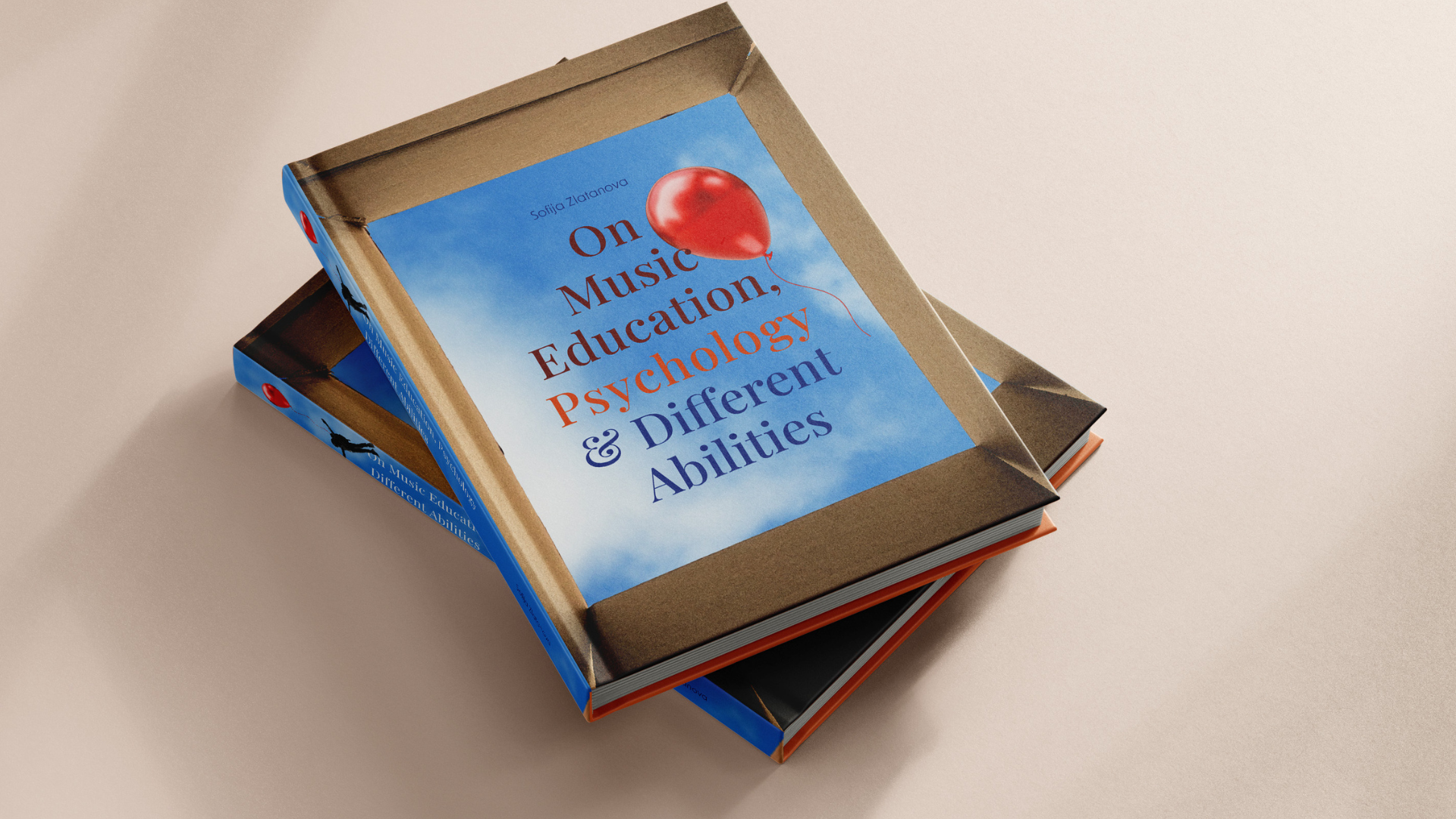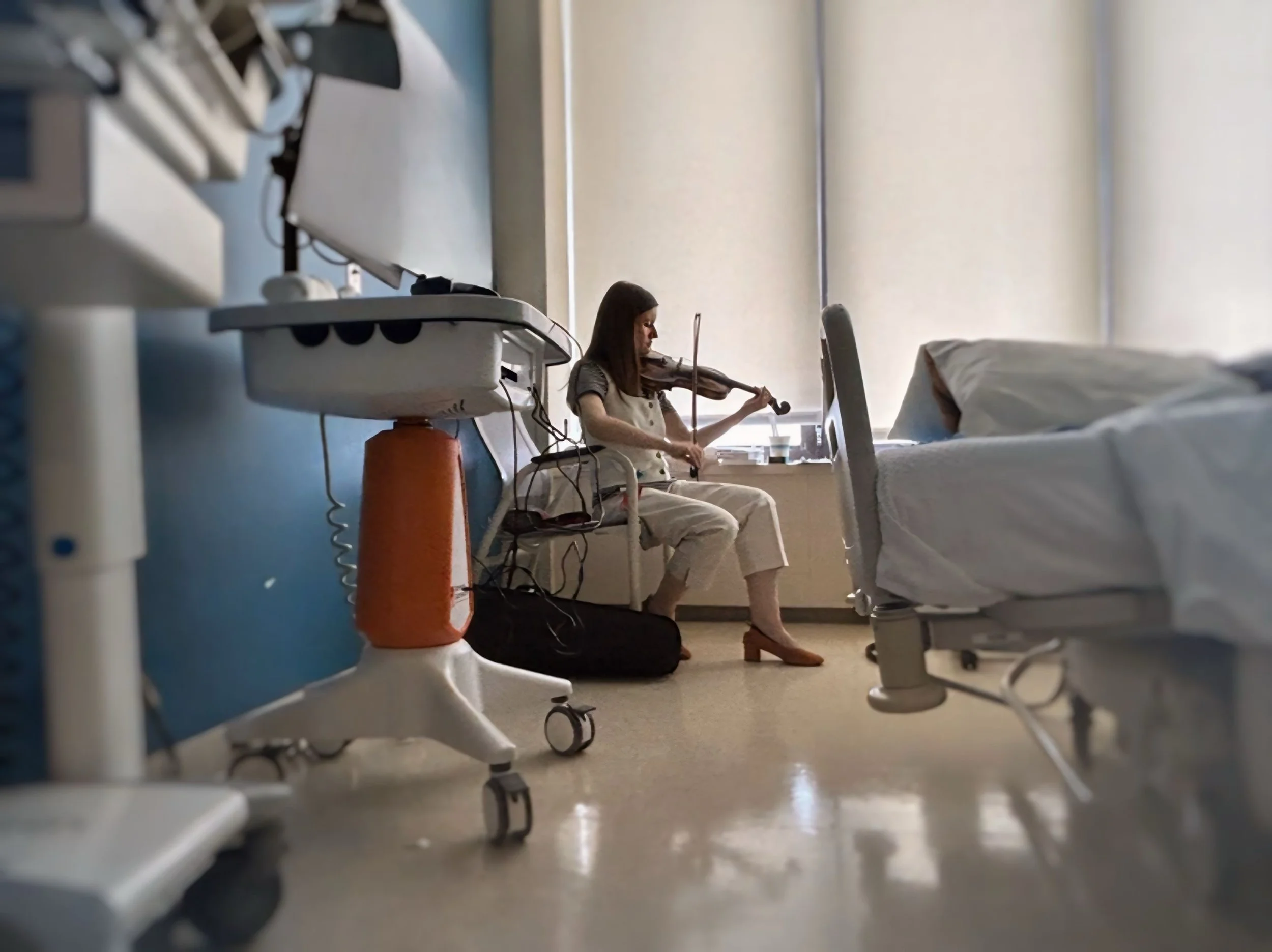The Clinical Musician & Educator
Reflections on music, autism, teaching, and the art of care.
Welcome to The Clinical Musician & Educator, my professional notebook for sharing research, reflections, and real-world insights on music therapy, classical music, autism, inclusive teaching, and patient care. Here, I explore how instruments, questions, and rigorous study can help us trust music as a tool for comfort, connection, learning, and healing — alongside modern medicine. Thank you for reading and thinking with me.
Notes from the Hospital: Music, Healing, and the Questions That Keep Me Here
A glimpse into my days at Mass Eye and Ear, where I carry a violin, a folding piano, and a guitar into patient rooms — exploring how classical music can ease pain, spark connection, and remind us that healing is more than medicine.
Why we need more research, more instruments, and more courage to trust a piano as much as a pill
These past weeks at Mass Eye and Ear have been among the most meaningful in my journey as a musician, therapist-in-training, and researcher. Every morning, I carry my badge, my violin, a folding piano, and a guitar — stepping into rooms where music becomes more than sound. It becomes comfort, connection, and sometimes, a kind of medicine.
Under the guidance of an outstanding supervisor — Peri Strongwater, a brilliant clinician, musician, and inspiring mother — and alongside a team whose dedication defines true patient-centered care, I’m learning what it really means to sit at the bedside, listen deeply, and offer music when words alone cannot reach.
In this setting, I see daily how music can ease pain, spark imagination, and hold space for emotions that clinical language cannot always contain. A gentle melody, a familiar song, or an improvised phrase can become a tool for relief, self-expression, and dignity.
These moments remind me why I keep asking deeper questions: Why does this work? How can we study it more rigorously? How can we make it more accessible — so it complements medicine and supports more patients, families, and communities?
Classical Music and Questions We Still Need to Ask
Decades ago, researchers popularized the so-called Mozart Effect — the idea that listening to Mozart’s Sonata for Two Pianos in D Major could boost spatial reasoning or reduce seizure activity for some people. More recent studies suggest Mozart’s clear structure and balanced tempo can activate brain regions connected to stress, memory, and pain.
Beethoven’s music reveals something different. His work does not just soothe — it stirs. It gives voice to emotions we struggle to name. Research shows that expressive, familiar music can help people living with trauma, memory loss, or depression reconnect with themselves in ways that talk therapy or medication alone may not reach.
Yet for all we know, we still underfund this work. We trust a pill — but hesitate to trust a piano. We pay for quick fixes but neglect what can help prevent suffering at its roots: connection, expression, creativity.
If we compare the health conditions during Mozart’s or Bach’s lifetimes to today, we see dramatic advances in life expectancy and medical technology — but we also see that human suffering, stress, and the need for connection have not disappeared. In Mozart’s day, music was not just entertainment — it was daily life, woven into homes, communities, and even healing rituals. Today, we have new science, but we need to re-examine how we let music be part of our care and encourage research that looks beyond the obvious.
Where My Work Fits In
We need more rigorous research. We need literature that does not label but supports — not just repeating what we know, but asking new questions about classical music’s therapeutic potential. We need training that includes musicologists, ethnomusicologists, and diverse cultural perspectives — and that gives students space to question, compose, and build new approaches.
We also need more instrument diversity in practice. Not just guitar and piano — but strings, winds, and sounds that bring new frequencies and cultural meaning. A violin’s resonance, a clarinet’s warmth — each expands how we connect with people and how we measure outcomes.
My Master’s in Music and Autism at Berklee, under Dr. Rhoda Bernard, showed me how simply learning an instrument can be healing — especially for neurodiverse students. This shaped my book, On Music Education, Psychology and Different Abilities, where I explore how music supports learning, focus, emotional balance, and self-expression.
Part of my commitment is to keep this conversation open. I’m sharing selected hypothetical exercises and excerpts from my book here on my blog — models designed for study and inspiration. They are not patient cases — they are starting points for students, families, and fellow therapists to adapt and expand in practice, both in Music Education and in Music Therapy and Expressive Arts.
What If the Next Prescription Is Composed?
If I could, I’d ask Mozart and Beethoven what they understood so intuitively about the human mind when they wrote their notes. I can’t — but I can keep studying their patterns and structures, because what they left us is not just music but a kind of prescription for what it means to be human.
No patient, no family, no spirit should be starved of this.
Maybe it’s time to ask: What if the next prescription isn’t just written — but composed?
All views are my own and do not represent Mass Eye and Ear.






